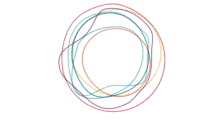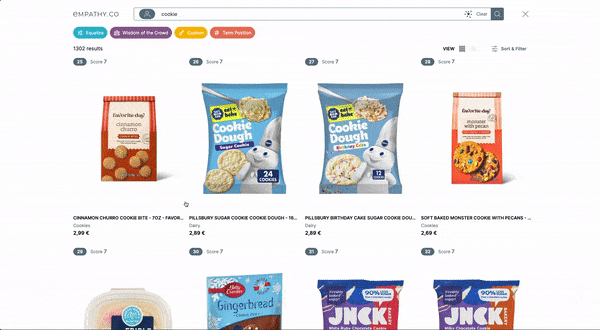Does London Fashion Week Really Get Heads Turning On The High Street?
Does London Fashion Week Really Get Heads Turning On The High Street?
As London Fashion Week draws to an end today, we thought it would be fun to take a look at data from one of the world’s largest fashion retailers to see if this huge fashion event actually influences real consumers’ shopping patterns.
 The analysis, which examined the
top trends
from LFW Autumn/Winter 2018/19 and compared them to what the British public searched for during that same period, clearly shows that yes,
consumers are on the hunt for the latest catwalk fashions
and look to our high street retailers for the everyday version of high-end trends.
While some of the 2018 LFW looks such as capes and silk had little impact, others had a much more pronounced, and perhaps even surprising, sway:
The analysis, which examined the
top trends
from LFW Autumn/Winter 2018/19 and compared them to what the British public searched for during that same period, clearly shows that yes,
consumers are on the hunt for the latest catwalk fashions
and look to our high street retailers for the everyday version of high-end trends.
While some of the 2018 LFW looks such as capes and silk had little impact, others had a much more pronounced, and perhaps even surprising, sway:
- The LFW trend with the most influence was animal print with searches, including leopard and snake, increasing by an incredible 1,300% during Autumn/Winter 2018/19
- Logo was another top search trend with consumers looking for items with logos or brand names increasing by 1,200%
- Leather dresses , the third biggest trend, saw a significant rise with searches increasing four-fold on the previous year
- Brown and rust proved its popularity on the high street seeing a 350% rise
- While searches for pleated skirts more than doubled
When we see a gorgeous but very extravagant dress from say Alexander McQueen or Stella McCartney in the pages of Vogue or on the front cover of the papers I’m sure many of us question whether there’s any real impact of these designs and trends on what ordinary people search for, purchase and ultimately wear.
What’s been interesting to see through this analysis is that, while not all trends make it onto the high street, we can see a clear LFW “impact”. It’s also demonstrated how search data can be a really powerful, and often undervalued tool, as a means of feeling the pulse of demand and understanding genuine customer intent. It not only highlights key seasonal trends but it can also improve the online shopping experience.
“Leopard”, “snake
and
“animal” print
were so popular in August/Winter 2018/19 that they all appeared within the
top 20 overall searched terms
for that period, proving that the high street went as wild for animal print as designers such as Dolce & Gabbana, Tom Ford and Roberto Cavalli did within their seasonal collections.
Tweed
(24)
, leather
(43) and
pleated skirt
(114) also made it into the overall top 200 searched terms showing once more the influence of the world’s top designers.
 As fashionistas digest the new trends from last weekend, what is clear is that high street brands must do also if they want to capitalise on this opportunity. By understanding customers through their online behaviour and search trends, retailers can engage with consumers while creating rich and memorable interactions that make people feel unique, special and like a catwalk king or queen!
As fashionistas digest the new trends from last weekend, what is clear is that high street brands must do also if they want to capitalise on this opportunity. By understanding customers through their online behaviour and search trends, retailers can engage with consumers while creating rich and memorable interactions that make people feel unique, special and like a catwalk king or queen!
What’s more, fashion events like the Oscars in a few weeks, and even celebrities in the news, can, and regularly do, inspire and create overnight trends that awake through each time zone. As indeed we saw with the 2017 Oscars and the huge increase in searches for black dresses following the #MeToo campaign.
Early detection of these trends, together with predictive analytics, can provide unique differentiators and opportunities for retailers that, when applied smartly, can help brands to anticipate demand, prepare stock levels and create a smoother and more joyful customer experience. To find out more, visit INSIGHT.










